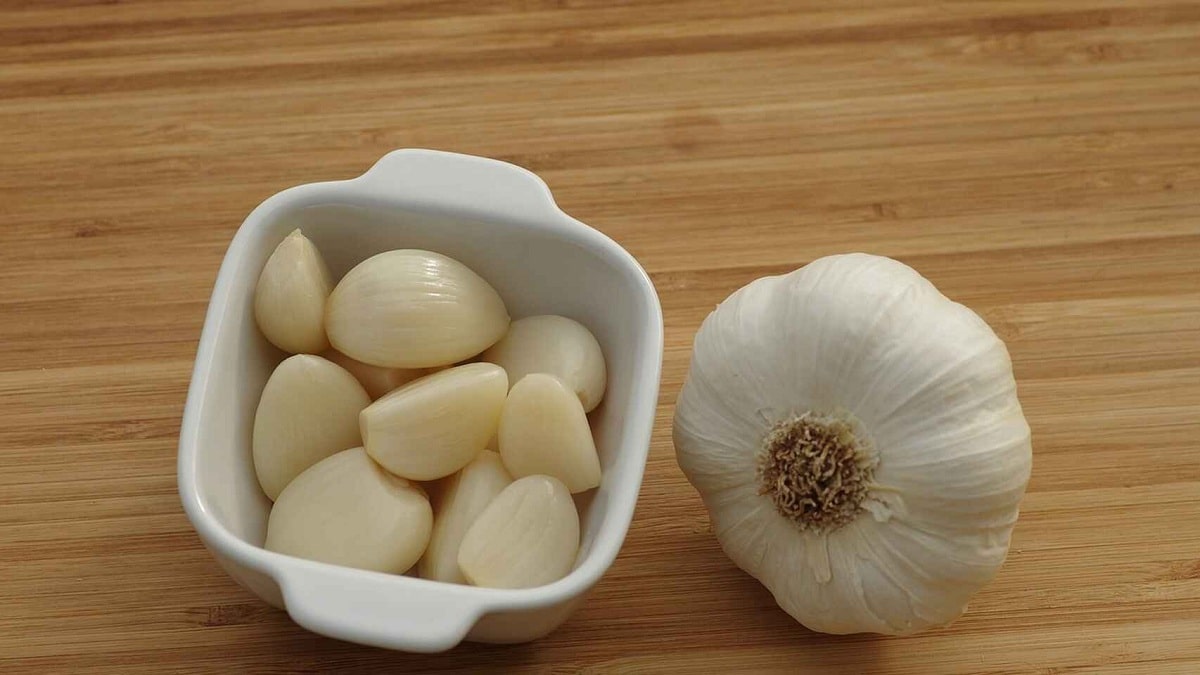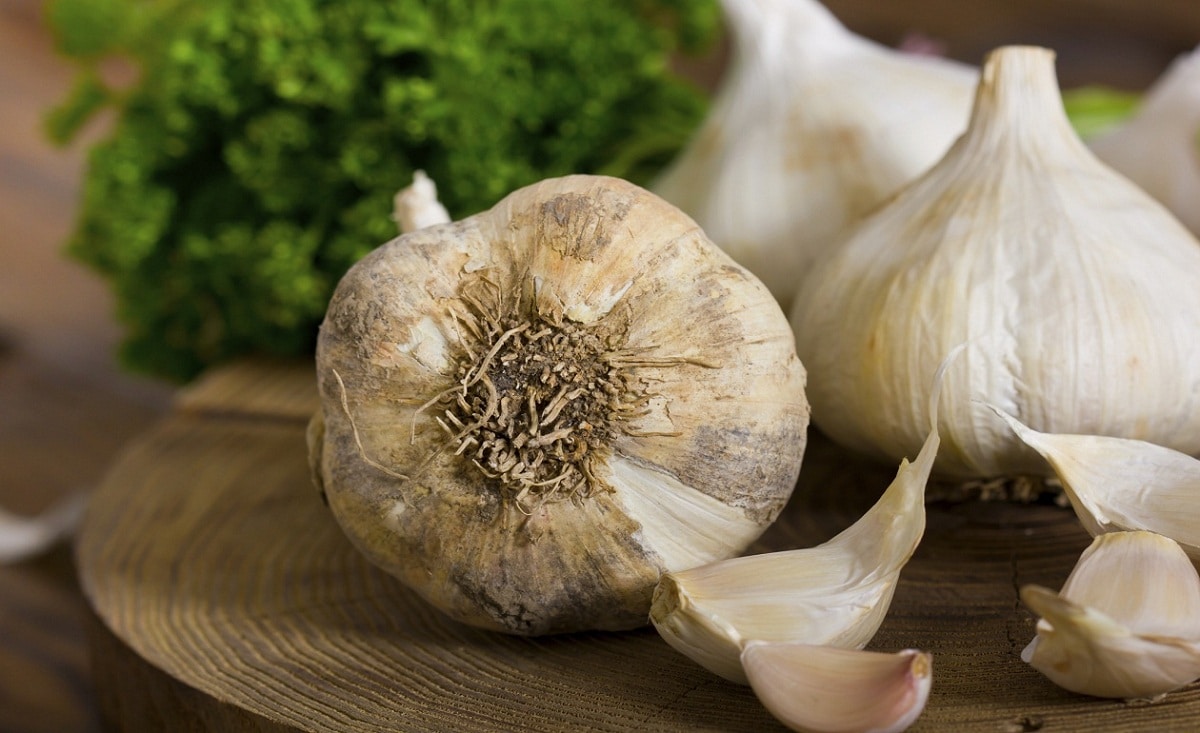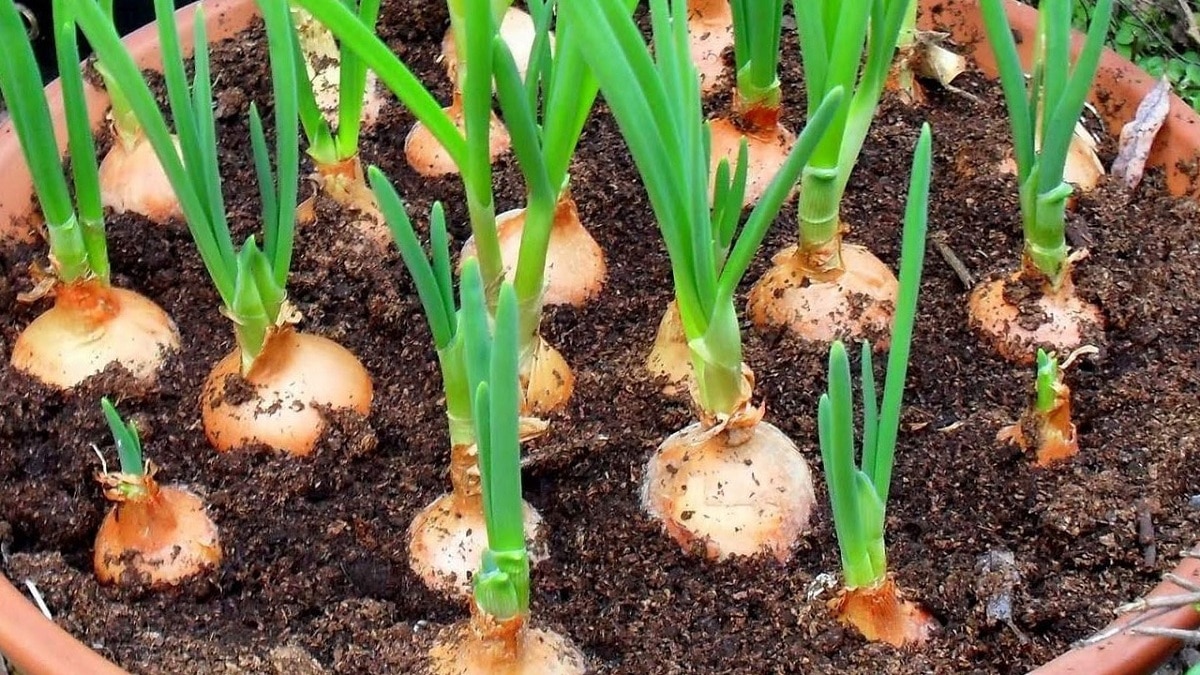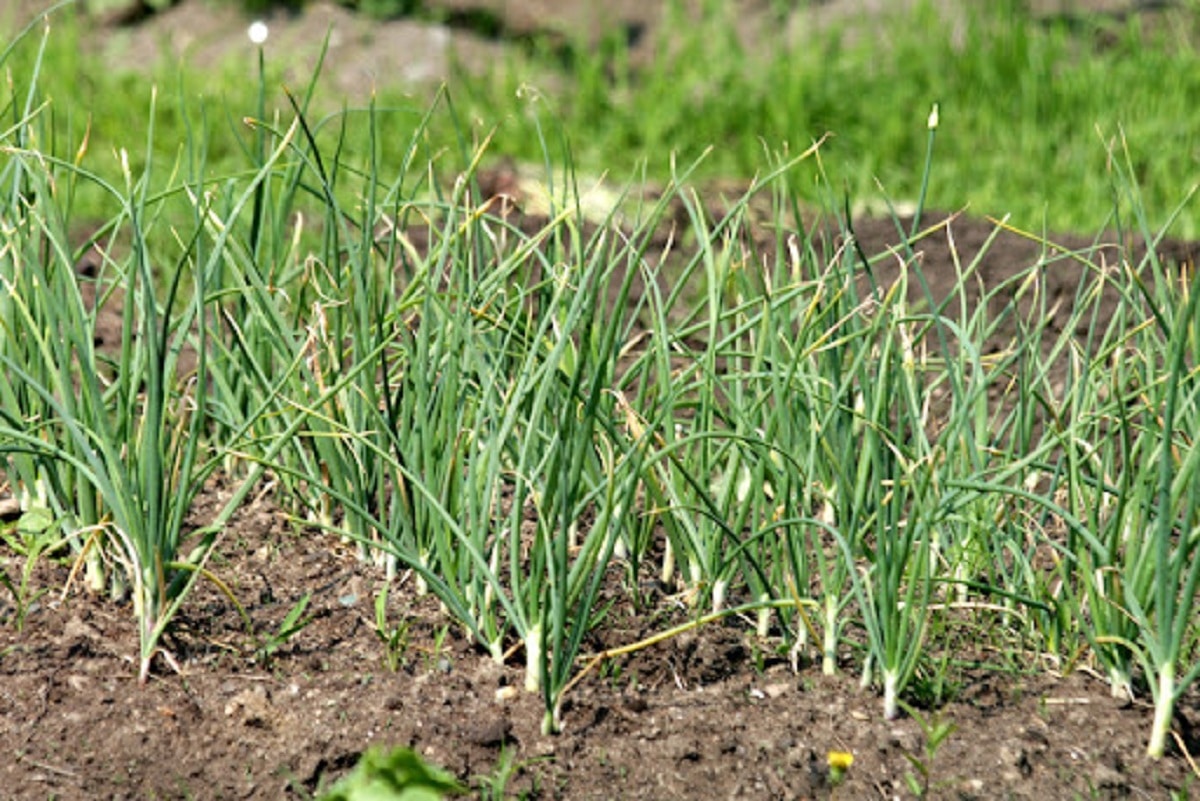
Garlic is one of the most useful crops if you have a home garden. They are widely used in the kitchen and are easy to grow. It is necessary to know a little more about this plant, its characteristics in order to better understand the cultivation requirements. It is very beneficial for disinfecting, cleaning the blood and several other things, apart from the nutrients it has. Sometimes it can be difficult to learn how to plant garlic, but here we are going to give you some good advice.
In this article we are going to tell you how to plant garlic and what its requirements are.
How to plant garlic

For its cultivation, it is important to know that when planting or sowing garlic, although they can tolerate a bit of shade, they prefer to grow directly in the sun. In autumn (they need to be cold to promote bulb development), the tips of the teeth are planted upward and each tooth will grow a full head. The organic way to protect them from fungi is to soak them in a solution of baking powder and water for several hours before planting (the ratio is one tablespoon to one liter of water).
If we want to harvest only the garlic heads, we plant cloves approximately every 15 cm, but if we want to harvest young garlic, which is a good ingredient for salads, we will plant them closer together, or we will simply place the entire head separating the cloves a little.
Its planting depth depends on the size of the bulb, although it is usually 2-3 cm, or up to 4 cm. We cover the garlic cloves with soil and then we cover the soil with straw or hay mulch and dry leaves. From the fourth week we will observe the growth of buds between the coverage areas. They grow slowly in winter, but their development accelerates in spring. In the middle of that season, we can "knot" the leaves of the plants to promote the formation of bulbs.
When we see that three quarters of the leaves turn yellow, it is time to harvest (approximately 8 months). Carefully poke a hole in the bottom of the plant and then remove the bulb. Braces are inconvenient because we can separate them. We protect them from the sun in a cool, dry place, and dry them after 4-6 weeks to clean and store them for later use. It can also be grown in pots. To do this, you have to use a pot from the bottom if we want to harvest the teeth.
Main pests and requirements

Once you know how to plant garlic, you should know that many pests can attack garlic. In general, garlic is a very hardy and easy to grow vegetable. Similarly, there are some pests that can destroy garlic crops. Exist:
- Onion fly (insect)
- Ringworm (insect)
- Garlic rust (fungus)
- Mold (fungus)
Regarding the requirements, we are going to select the most important ones, such as the type of soil. It adapts well to all types of terrain, but does not tolerate excessive humidity, the soil must be light and well drained. It is a dry plant, but before forming a bulb we must keep the soil moist. The frequency of irrigation will depend on the temperature and rainfall conditions.
It is not a demanding crop. It's hotter when it's cold, but grows best in temperate climates, where the optimum temperature fluctuates between 8 and 20ºC. It is not recommended to grow it with beans or cabbage, nor is it recommended to grow it where beets, alfalfa, peas, kidney beans, lima beans, and spinach have just been harvested. On the other hand, its beneficial associations are:
- Tomato
- Radish
- Onion
Its connection with aromatic plants is also beneficial.
Garlic cultivation care

Garlic care and watering is the basic part of your planting. It is a special type of cultivation in this regard, and its needs are different. Once we know how to plant garlic, more or less in mid-autumn as we said, we must prepare for its care. Irrigation varies according to the climate in which we live, that is, if it is the rainy season. For example, in places like Asturias, the climate is so rainy that you hardly have to water. It is important to stop watering the garlic 20 days after harvest to avoid maintenance problems due to high humidity or rot.
The problem of composting, in short, it is not a plant that needs a lot, and it is almost better to use less. But if you have to add some fertilizers rich in potassium. If we see that more than one stem grows where we plant a tooth, it is also interesting and important to remove it, so that the head develops well. After completing these tasks in the garden, we will have to tip or cut the flower at the end of the harvest, if it is a variety that has it, and then tie the knot to prepare it for the harvest.
How to plant elephant garlic
They are slightly different from the varieties we are used to, be it the purple garlic or the so-called white garlic of a lifetime. These garlic are of the best quality, are three times larger than regular garlic and have a slightly lighter flavor. It is ideal to consume it raw or in a salad. This garlic is native to the Chiloé islands in southern Chile. This is where the name of the garlic chilote in South America comes from. For everything else, the cultivation technique is the same as that of its ordinary cousin.
The garlic planting season in the northern and southern hemispheres is fall, some varieties are sown in spring. The care of the garlic plantation does not require much work and we let it grow, if it does not rain in autumn and winter we water it every 10 or 15 days, with a small amount of water.
Two months after planting them, we can start building. If we see that it is very hard, we will do it so that it does not cost too much to form the light bulb. Finally, when the cultivation is about to end, we will tie garlic to prevent the plant from developing. Garlic is a versatile plant, and we cannot stop growing it in orchards or gardens. Also, planting garlic near other crops can help protect against pests and insects that can affect the health of other plants.
I hope that with this information you can learn more about how to plant garlic and what your requirements are.